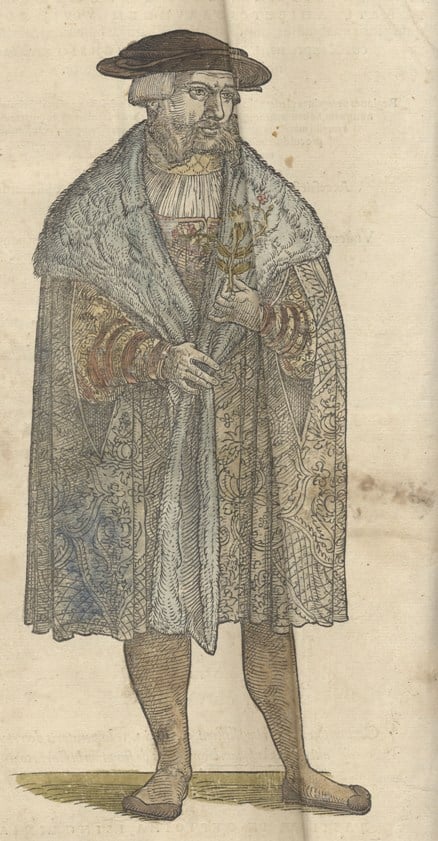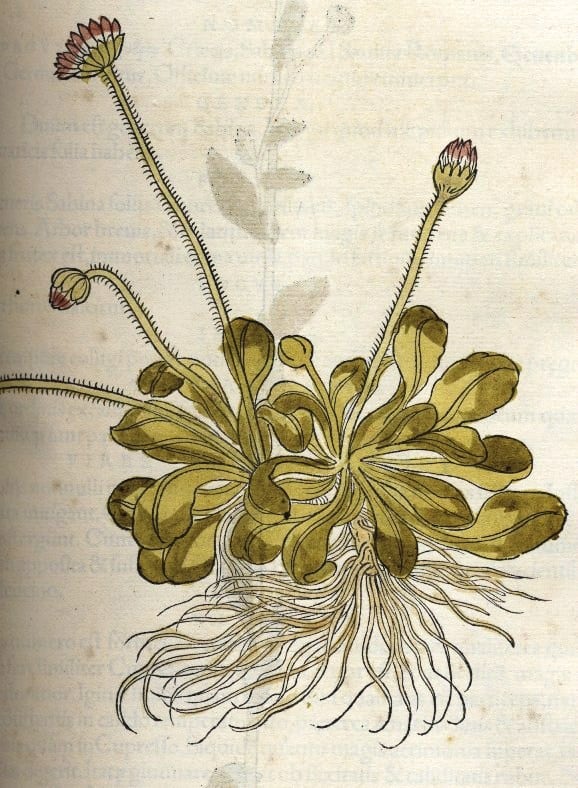In the sixteenth century the same spirit which inspired Vesalius and others in the field of anatomy served also as the inspiration for the study of flora from actual specimens, culminating in what is certainly the most celebrated and probably the most beautiful herbal ever published, Fuchs’ De historia stirpium commentarii Basel, 1542.
Leonhart Fuchs (1501-1566) was a German physician, professor of medicine at Tübingen, a practicing pharmacologist, a fervid Hippocratist, and writer of numerous works, the most famous of which is his herbal in which he describes 400 German plants as well as 100 foreign ones. The 512 woodcut illustrations are neatly colored by hand in pleasing tones and include a full-page hand-colored woodcut of Fuchs (see left) as well as portraits of the three illustrators, one of the first instances of such a tribute being paid to artists in a printed book (see lower rightl).
This first edition of this lavish herbal is characterized by spacious design and layout, by fine printing, and by the sheer number of illustrations. Its popularity was immediate and it was issued in many subsequent editions and translations, but the first edition was never equaled.


